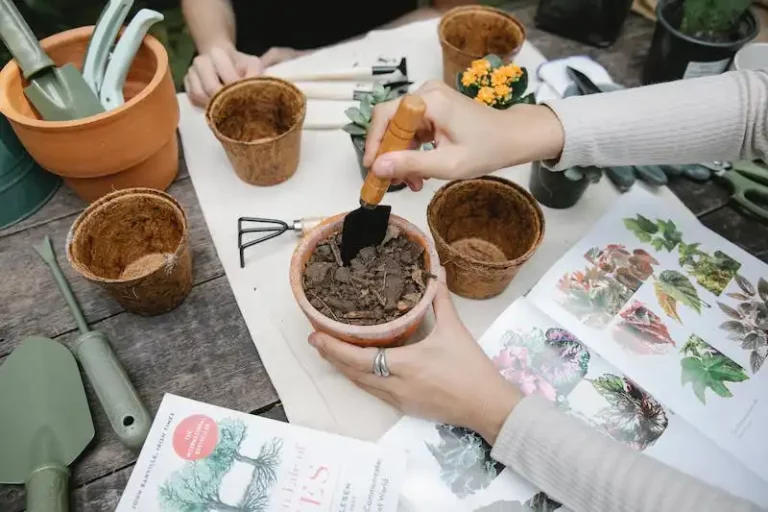If you are looking for a colorful and easy-to-care-for houseplant, the Strawberry Begonia (also called Saxifraga Stolonifera or Strawberry Begonias) is a perfect choice. These plants are known for their attractive foliage and delicate flowers, and they can be a great addition to any indoor space.
One of the most important aspects of Strawberry Begonia care is providing them with the right amount of sunlight. While these plants prefer bright, indirect light, they can tolerate some direct sunlight as well. It is important to place them near a window where they can receive a few hours of sunlight each day.
When it comes to watering, Strawberry Begonias prefer to be kept slightly moist. It is important to water them regularly, but be careful not to overwater as this can lead to root rot. It is also important to provide good drainage by using a well-draining soil and allowing the excess water to drain away.
Another important aspect of caring for Strawberry Begonias is maintaining the right humidity levels. These plants prefer a slightly humid environment, so it is a good idea to mist their leaves with water or place a shallow tray of water near their pot to increase humidity.
Strawberry Begonias are also quite easy to propagate. They produce small plantlets, called stolons, that can be carefully pinched off and planted in their own pots. This is a great way to grow more plants and spread their colorful foliage throughout your home.
While Strawberry Begonias are generally easy to care for, there are a few things to watch out for. They are susceptible to common begonia diseases such as powdery mildew and botrytis. It is important to watch for any signs of these diseases, such as discolored or wilting leaves, and take action immediately to prevent their spread.
Overall, Strawberry Begonias are a great choice for indoor gardening. Their attractive foliage and delicate flowers make them a beautiful addition to any space, and their easy care requirements make them suitable for beginners. With the right sunlight, watering, and humidity, you can enjoy these colorful houseplants for years to come.
“The Strawberry Begonia Care: Growing Strawberry Begonias Indoors”
National Saxifrage Growing Society
How to Grow Strawberry Begonia Indoors
Growing strawberry begonias indoors is a great way to start incorporating these beautiful houseplants into your home. Also known by their scientific name Saxifraga stolonifera, these plants have delicate, thread-like foliage that resembles strawberry leaves. They can be grown as both ground cover and houseplants, making them a versatile addition to any indoor garden.
Careful placement of your strawberry begonias is key to their success. These plants prefer bright, indirect light, so choose a spot where they can receive plenty of sunlight without being exposed to direct sunlight. Placing them near a window where they can get filtered light is ideal.
Strawberry begonias also thrive in environments with high humidity. You can simulate the necessary humidity by misting the leaves regularly or placing a tray of water near the plants. Additionally, these plants are quite thin and delicate, so they prefer light, well-draining soils. A potting mix formulated for succulents or African violets works well for the foliage of the strawberry begonias.
When it comes to watering, it’s important to watch the moisture levels of the soil. Strawberry begonias prefer to stay slightly moist, so water them when the top inch of soil feels dry to the touch. Avoid overwatering, as this can lead to root rot and other diseases.
Fertilizing your strawberry begonias with a balanced houseplant fertilizer can help encourage more foliage growth and flowering. Follow the instructions on the fertilizer packaging for best results. Applying a diluted fertilizer every two to four weeks during the growing season is usually sufficient.
Strawberry begonias can also be propagated easily from the plantlets that grow on long stolons. Simply cut the plantlets away from the mother plant and pot them in their own containers. Provide them with the same care and conditions as the mature plants, and watch them grow into new strawberry begonias.
While strawberry begonias are generally hardy plants, they can still be susceptible to pests such as aphids and mealybugs. Regularly check the leaves for any signs of infestation and take appropriate action if necessary. Using natural pest control methods or commercially available insecticidal soap can help keep these pests at bay.
In conclusion, growing strawberry begonias indoors can complement any indoor garden with their colorful and woody foliage. By providing them with the right amount of light, humidity, and watering, you can ensure that these plants thrive in your home. Keep an eye out for pests and diseases, and fertilize them regularly for additional growth. With the right care, your strawberry begonias will brighten up your indoor space and bring joy with their delicate beauty.
Watch Now How to Grow Strawberry Begonia Indoors
If you’re interested in growing houseplants but want something a little different, give strawberry begonias a try. These unique plants, also known by their botanical name Saxifraga stolonifera, get their name from the thin, thread-like stolons that grow from the foliage and resemble strawberry runners.
When it comes to care, strawberry begonias are relatively easy to grow indoors. They prefer bright, indirect sunlight, so placing them in a shady spot near a window is best. As with most begonias, these plants prefer consistently moist soil, so be sure to water them regularly. However, be careful not to overwater, as they can develop root rot.
Growing strawberry begonias indoors starts with the plantlets that grow from the stolons. These plantlets can be carefully separated from the parent plant and potted up to start new plants. Alternatively, the stolons can be pinned down into the potting soil where they will root and form additional plantlets. Once these new plants have rooted, they can be carefully separated and potted up individually.
Strawberry begonias are known for their attractive foliage, which is heart-shaped with scalloped edges. The leaves are usually a vibrant green color but may develop red or purple tones in bright light. They also produce delicate white flowers on thin stems, adding to their visual appeal.
In terms of temperature, strawberry begonias prefer a range of 60 to 75 degrees Fahrenheit (15 to 24 degrees Celsius) and require relatively high humidity levels. To increase humidity around the plant, you can place it on a tray filled with water or use a humidifier.
When it comes to fertilizing, strawberry begonias benefit from a balanced, water-soluble fertilizer. Apply the fertilizer according to the package instructions, taking care not to over-fertilize, as this can lead to leaf burn. As for potting soil, a well-draining mix formulated for houseplants is best.
Strawberry begonias are generally pest-resistant; however, they may occasionally attract common houseplant pests like aphids or spider mites. If you notice any pests, take action promptly using organic pest control methods.
In conclusion, growing strawberry begonias indoors is an enjoyable and rewarding experience. Their unique characteristics, like their heart-shaped foliage and thread-like stolons, make them stand out as a beautiful houseplant. So, if you’re interested in adding a touch of nature to your home, consider growing strawberry begonias. Watch now to learn more about how to care for these delightful plants!
Strawberry Begonia Care
Strawberry begonias, also known as Saxifraga stolonifera, are charming plants that can add a pop of color to any indoor space. They are not true begonias, but their foliage resembles that of begonias, hence the common name. These plants are native to East Asia and belong to the saxifrage family.
Strawberry begonias are easy to care for, making them perfect for beginner and experienced gardeners alike. Here’s some information on how to care for these lovely plants:
- Light: Strawberry begonias prefer bright, indirect light. Avoid placing them in direct sunlight, as this can scorch their delicate leaves.
- Watering: Keep the soil evenly moist, but not soggy. These plants don’t like to dry out completely between waterings. Use room temperature water to avoid shocking the plant.
- Humidity: Strawberry begonias thrive in high humidity environments. You can increase humidity around the plant by placing it on a tray filled with water and pebbles or by using a humidifier.
- Soil: Use a well-draining potting mix that is rich in organic matter. Good soil drainage is essential to prevent root rot.
- Fertilizing: Feed your strawberry begonia with a balanced liquid fertilizer every four to six weeks during the growing season. Follow the manufacturer’s instructions for application rates.
- Propagation: Strawberry begonias can be propagated through plantlets that form on thread-like stolons. Gently separate the plantlets from the mother plant and plant them in their own pots.
- Repotting: If your strawberry begonia outgrows its current pot, you can repot it in a slightly larger container. Use fresh potting soil and ensure good drainage.
- Pests and diseases: Watch out for common indoor pests like aphids, mealybugs, and spider mites. Treat any infestations promptly with insecticidal soap or horticultural oil. Strawberry begonias are generally disease-resistant when provided with proper care.
- Zones: Strawberry begonias are best suited for USDA hardiness zones 6-11. In colder regions, they can be grown as houseplants or brought indoors during winter.
With their colorful foliage and trailing growth habit, strawberry begonias are a beautiful addition to any space. Take care of them, and they will reward you with their unique characteristics and delicate flowers.
Light
Strawberry begonias are shade-loving plants and prefer to grow in indirect light. Direct sunlight can burn their delicate leaves, so it’s best to place them in a shady spot indoors. They can also tolerate low light conditions, but be careful not to keep them in complete darkness. A bright room with filtered light is the ideal location for these plants.
When growing strawberry begonias indoors, watch out for common diseases like powdery mildew and root rot. They are more likely to occur if the plants are kept in a humid and poorly ventilated environment. To prevent these issues, make sure the plants are in a well-draining soil mix and avoid overwatering.
Although strawberry begonias do not require a lot of fertilizing, you can complement their growth by using a balanced houseplant fertilizer. Follow the package instructions for the best results. It’s also important to water the plants from the bottom to avoid getting the leaves wet, as this can lead to leaf spot diseases.
Strawberry begonias can easily start new plants through stolons, which are thread-like runners that form from the mother plant. You can propagate them by pinning the stolons onto the ground or into a pot filled with moist soil. Once roots develop, you can separate the new plant from the mother plant and repot it.
The flowering and foliage of strawberry begonias are thin and fragile. Avoid handling the plants too much to prevent damaging their delicate structure. Also, be aware that some varieties of begonias, like the Saxifrage begonias, have woody stems and can grow into small trees if given the right conditions.
In addition to proper lighting, keeping the humidity level around strawberry begonias is important. They thrive in a humid environment and may suffer if the air is dry. To increase humidity, you can place a tray filled with water near the plants or use a humidifier.
Now that you have more information about the light needs of strawberry begonias, you can provide the perfect growing conditions for these beautiful houseplants. Just remember to protect them from direct sunlight, provide adequate humidity, and watch out for pests and diseases. With proper care, your strawberry begonias will brighten up any shady corner of your home.


